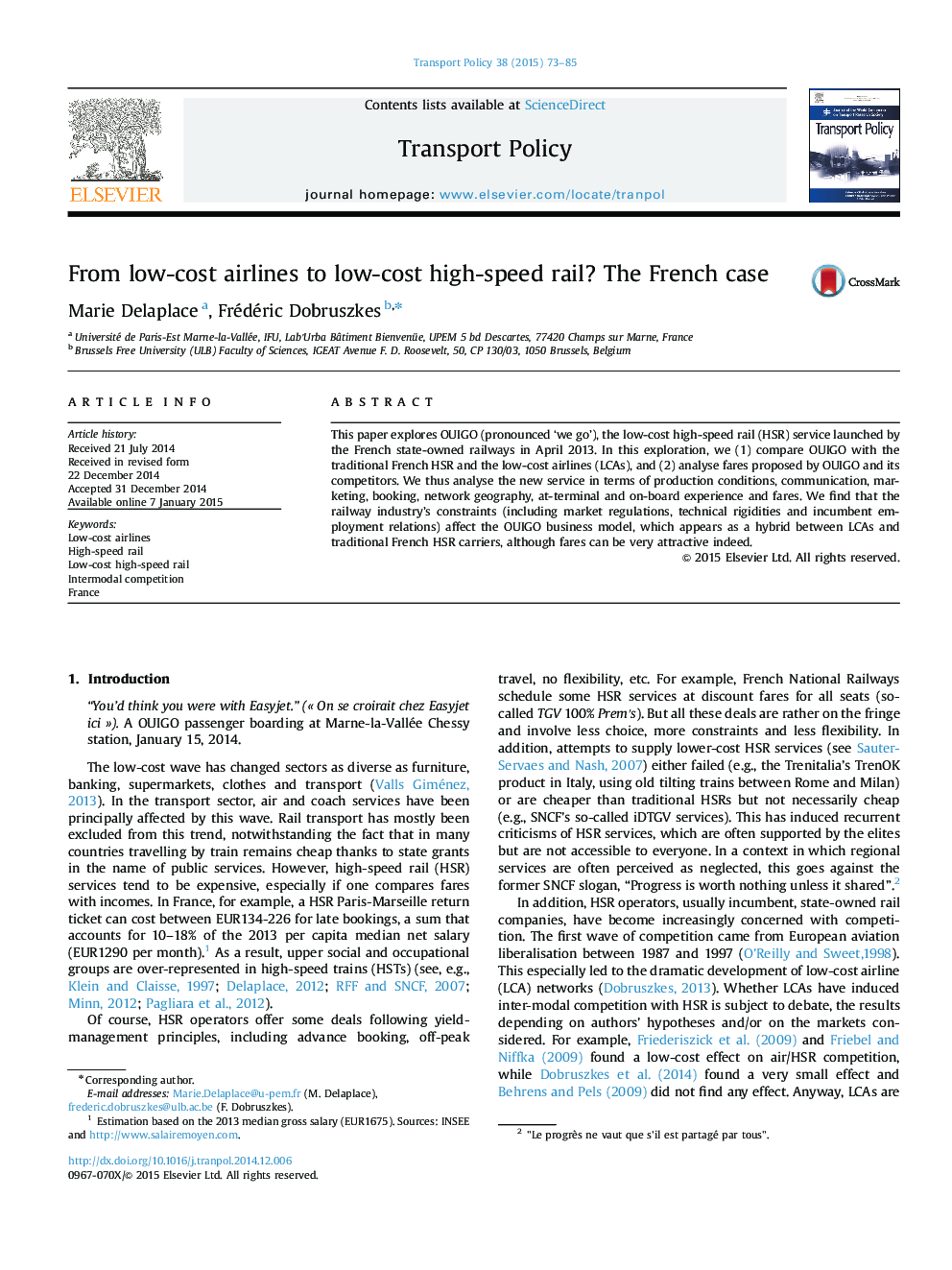| Article ID | Journal | Published Year | Pages | File Type |
|---|---|---|---|---|
| 1064995 | Transport Policy | 2015 | 13 Pages |
•French low-cost HSR OUIGO is compared with LCA and traditional HSR business models.•OUIGO is a hybrid model influenced by both LCA and traditional HSR models.•OUIGO copies the LCAs only when it is technically, politically and socially feasible.•OUIGO’s business model impacts its network geography and vice versa.•Fares analysis confirms that OUIGO is usually much cheaper than air and rail alternatives.
This paper explores OUIGO (pronounced ‘we go’), the low-cost high-speed rail (HSR) service launched by the French state-owned railways in April 2013. In this exploration, we (1) compare OUIGO with the traditional French HSR and the low-cost airlines (LCAs), and (2) analyse fares proposed by OUIGO and its competitors. We thus analyse the new service in terms of production conditions, communication, marketing, booking, network geography, at-terminal and on-board experience and fares. We find that the railway industry’s constraints (including market regulations, technical rigidities and incumbent employment relations) affect the OUIGO business model, which appears as a hybrid between LCAs and traditional French HSR carriers, although fares can be very attractive indeed.
